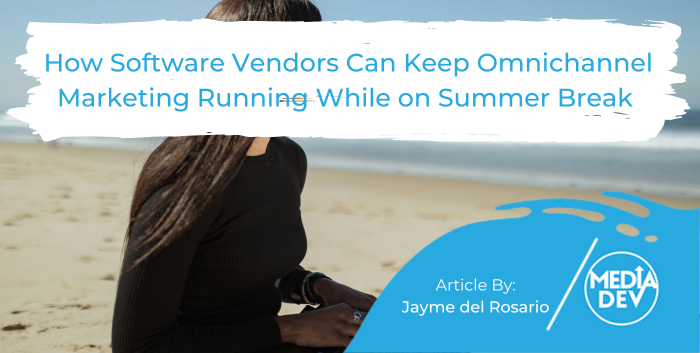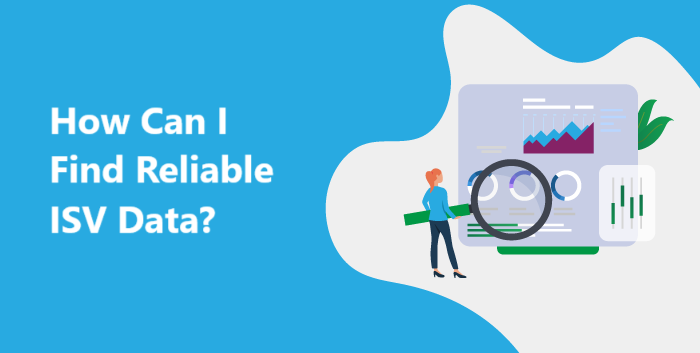B2B software marketing is a world unto itself. Anyone who has worked in it can tell you that it’s not all it’s cracked up to be. Not only is it often difficult for marketers to create the right messaging without sounding too technical, but outreach needs to come in all shapes and forms (especially when you are targeting different job functions within an organization).
Another challenge lies within the fact that B2B software sales cycles are typically very long. Whether that be because many different decision-makers are part of the purchasing process, or that companies need to be sure they’ll get a sufficient return on their investment before committing to buying, some solutions can take upwards of 2 years to sell from start to finish. What that means for people involved in software sales is that it is critical to maintain a viable nurture pipeline and consistently generate high-quality leads with the potential to convert.
Of course, generating a consistent influx of leads is easier said than done. So what strategies work to generate high-quality leads in abundant quantity over time? Here are 5 B2B software marketing strategies that can help you get on the road to success:
Market intelligence research for effective ABM
Accounts-based marketing (or ABM for those of you obsessed with marketing acronyms) is becoming more and more frequent for software vendors targeting large enterprise accounts. This is partly due to the fact that “spray and pray” outreach methods of the past are dead, but also because a tailored effort needs to be done in order to focus on accounts that represent the most strategic importance for an organization. But picking names out of a hat without knowing anything about those accounts won’t get you anywhere, which is why research and understanding about the account is needed in order to have the right outreach for each individual account on your ABM list. Market intelligence reports provide that deep knowledge you need so that you are sure you are going after the best account with the best messaging.
Leveraging the right content for education
Content marketing cannot be ignored in software sales. Since sales cycles are long, education and nurturing is required, and the best way to do that is through great content. If you are targeting a particular industry, use-cases, case studies or success stories for that particular vertical are a must. But publishing content is not enough — you need to make sure it gets in front of your audience. For that there are a number of tactics you can deploy: content syndication, writing with keywords in mind for SEO (which, of course, is a longer-term strategy), email marketing and even outbound telemarketing can all help. Having a holistic approach across channels will ensure that you are present where your buyer personas are, both on and offline.
Social selling for first engagement
Engaging prospects on social media platforms such as LinkedIn is a great door opener. Not only can you network with hundreds of relevant contact profiles all in one place, but you can also create visibility for your brand by making regular posts about your company, or your solution. Social selling is a great way to begin a conversation with a prospect in order to qualify information about pain points and assess level of interest. But it is a bit of a misnomer to talk about “selling” at this stage since you are never going to sell B2B software on social media. Reaching out to relevant prospects on LinkedIn that you can nurture over time, however, should help you create and sustain a viable pipeline — which in turn will help you close more deals in time.
E-mail marketing for keeping the lines of communication open
Once you have identified the right decision-makers, having an effective email outreach plan is a good way to keep the lines of communication open. Keep in mind that you cannot have a one-size-fits-all approach since a cookie-cutter pitch is likely to fall on deaf ears. Creating an email campaign for a specific audience will help improve your open and click-through rates. Be sure to include several links to appropriate landing pages, and make sure that your call-to-action is clear. What are you expecting the prospect to do next? Map out the journey and then conduct A/B testing to see which message has the best response rate.
Pick up that phone
Many people have an aversion to the phone and with cause. We have all been bothered at some point in our lives by a pesky telemarketer who won’t take no for an answer as they peddle products with little value. But if you come across a prospect that is non-responsive, sometimes picking up the phone is your best bet. It certainly will help you know faster whether or not you are wasting your time on someone who is genuinely not interested. Make sure to leave a message if the prospect doesn’t answer — and follow up with an email if they don’t call back.
Conclusion
Unfortunately, high-quality leads don’t grow on trees. It takes time and effort to build a viable prospect pipeline that you can educate and nurture over time. Finding the right types of prospects in abundance means research, crafting tailored messages, and knowing your buyer personas inside and out. Being good at B2B software sales means trying lots of different tactics, and more than anything, not giving up.








